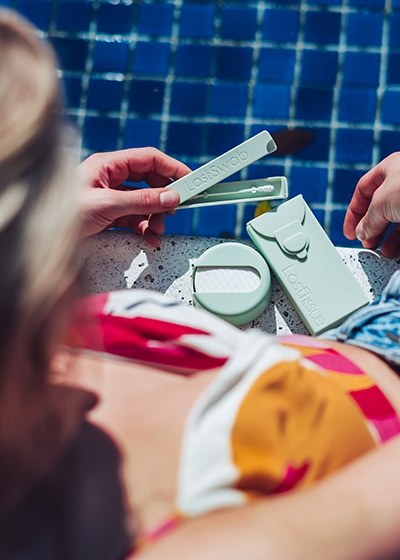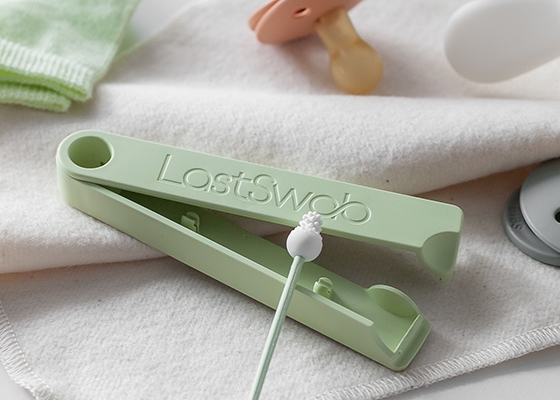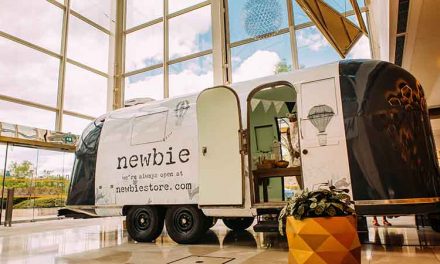10 Questions for LastObject Founder Isabel Aagaard
All Images: LastObject
LastObject is revolutionising reusable alternatives to single use products. The release of their fifth product, the LastPad inspired me to sit down with Founder Isabel Aagaard and ask her 10 Questions about innovating reusables.
The world of reusable products is a fascinating one. Sometimes, the alternatives to single use products can be very simple. Sometimes they are highly innovative. One company applying themselves to the business of reusable innovation is LastObject. Founded in 2018, the company made a big splash via crowdfunding platform Kickstarter to fund and launch their first product in 2019, the LastSwab. Since then, they have successfully funded and bought to market other products like the LastTissue, LastRound and now, the LastPad.
Founder Isabel Aagaard has a background in co-design, but along with her co founders, she has a passion for tackling eco issues. At the time of writing, with only a few days to go of the Kickstarter campaign, the LastPad is set to over raise again, demonstrating the appetite for innovative, reusable products. I spoke to Isabel via Zoom to find out more about the process behind the designs and why LastObject feel so passionate about designing out the need for single use items in our lives.
The Vendeur: You describe yourself as a co-designer, what does that mean?
Isabel Aagard: Before we began LastObject I was a co-designer. It’s essentially a collaborative designer, someone who collaborates with other people to design a product. Typically the collaboration is with people who aren’t designers. I create the setting for designing, without people even realising they are doing it themselves. Mostly I designed products for the hospital industry. It would normally take years to do the research needed but instead we got doctors, nurses and patients together and gave them tools to design the products they needed. We give them post-it notes, ask them to create hierarchies and gave them materials and asked for feedback. They would design their own equipment and I just facilitated that process. I take all the threads together to create something.
TV: Where did the idea for LastObject come from?
IA: Me and my two co-founders are all designers,we share a need to design, however we design in different ways. We wanted to start creating products together and create something with a purpose. The whole research phase was an inspiration for where we should start. This allowed us to understand where we could make a difference. Single use items are a priority for us as we realised we can have a huge impact – it’s a trillion dollar industry. For many years, single use items have been predominantly not well designed. This was an area that we felt we could make a sustainable change.
Do you work in sustainability?
The WIP is our new digital platform for eco aware brand founders, entrepreneurs and side hustlers. It's a place to find community as well as learning resources. Launching this Winter, you can sign up for updates below.
TV: You have found reusable options for swabs, tissues and cotton rounds, why did you decide to tackle sanitary pads when there are so many reusable ones already on the market?
IA: We have a big list of things we want to look at, and they get prioritised differently. When we hit a barrier, we move onto something else. If something is very wasteful it also gets priority over other things. We also make decisions based on where we feel we can make the biggest impact.
TV: What makes LastPad different from other reusable pads on the market?
IA: We have created a unique three layer design. The top is woven in small funnels so when you bleed on it, the liquid is transported to the next layer, which keeps you dry. This was crucial as we understand that feeling wet is uncomfortable. It’s common in sportswear apparel fabrics to funnel sweat from your body, so it’s a similar method. The fabric also has silver melted into it (a process that is better for water systems when washed). It’s very innovative and feels soft next to your skin.
The second layer is bamboo. At the beginning of the process, we had it very thick. However we had to slim it right it down because we found out that when you bleed over time, liquid can be absorbed better in this way. The pad itself is very thin because we wanted it to become one with your lingerie. The third layer is a leak proof but breathable fabric.
TV: What other elements of the design make it so usable?
IS: It has to be practical. That’s why we added the silicone strips to help the pad stay put in your underwear. This prevents it moving around too much and minimises leaks. Our products have to be good, because if it doesn’t work then you won’t use it again. All of our products are made to be kept and taken care of. The pad is a design object but it really works for your system. Reusables need to provide a good experience for you, and be easy to wear and pop into a waterproof bag. Your pad should be problem free and discreet.
TV: What do you say to people who protest about the amount of washing involved with reusable items vs single use ones?
IA: It’s a question we were asked when we created the LastSwab and LastTissue too. Unfortunately people can’t grasp how much energy goes into the production of a single use item. Yes a washing machine uses water and energy, so we still recommend that you wash your reusables responsibly. Take cloth nappies as an example, as a parent you’re going to wash lots of things anyway when you have a baby. It’s easier to look at it as a habit you already have. Make sure to fill your machine and wash on a cold temperature to mitigate the energy used.
However in the grand scheme, washing reusable products is a much better solution. There are so many elements of production which are inconvenient for the environment. Things like water usage, electricity, shipping etc. Transportation of single use products has a big impact too. It’s done on a huge scale, as consumers we don’t realise the impact it has. By washing things, you’re energy consumption doesn’t come close to the energy used to create the amount of single use items that are produced globally.
Enjoying this article?
Then you'll love our Newsletters. At the beginning of each month, we send you the low down for the month ahead, featuring news and our favourite responsible products and brands you need to know about. And whats more, you receive all of this direct to your inbox before anyone else.
TV: How did you go about choosing a factory to make the pads?
IS: We’ve switched our manufacturing around since we first started. The Kickstarter crowdfunding campaign allowed us to gain an understanding of the factories and how they worked. Now we have moved production to Denmark for some of the LastObject products. However the LastPad is being produced in Vietnam. We wanted somewhere that was good at making underwear. So our LastPads are being produced in the same factory as Victoria’s Secret.
Human and eco values were so important when choosing the factory. For example they have to demonstrate that they limit water use and energy too. We have someone working with us now who just sources fabrics and factories in a way that lines up with our values. Sourcing is a big part of what we do. It’s such a puzzle to get everything to work together. However, for the first time we are more structured in this way. LastObject is also pending as a B Corp certified company, which has meant that we have tightened up agreements we already had in place to ensure compliance.
TV: You had the idea for the LastPad in 2019, excluding COVID related delays, why did it take so long to bring to market?
IA: At LastObject we work on multiple products and designs at the same time. To create a good product we needed a better understanding of fabrics and innovation. We are form based traditionally but the LastRound was the first product where we worked with fabrics. In order to make each product innovative I go back and forth to make sure it has that edge that nothing else has. The LastPad is reusable but it needed to be really good too. We wanted it to be the best so that consumers can stop buying single use sanitary pads.
Sometimes it takes years to bring a product to market but we’re proud to solve the sanitary pad problem now. Because it’s a feminine hygiene product, it had to be considered. Menstrual products in particular are so wasteful. Not just in it’s components, but it can also be bad for our health. 50 million single-use menstrual products are thrown out every year and sanitary pads are 90% plastic, so this doesn’t break down naturally.
TV: There must have been a lot of testing involved?
IA: We tested it a lot! We measured the liquid intake with tools. Myself and my friends and family have been wearing the LastPad constantly. We kept diaries regarding what size pads we used and our experiences using them. We worked out the issues as they arose. It helped us change up the design. I have to say, it was fun to design this with two guys. I found it to be a funny period of time working with them on this. As a person who menstruates, I had to talk to them about the intricacies of menstruating, and I had to say this out loud.
TV: Why is the issue around safe, eco friendly menstruation products only just being addressed with products like reusable pads, menstrual cups and organic tampons?
IA: The menstruation cup became available a few years ago and was so groundbreaking. The feminine hygiene market is a segment that we haven’t looked at yet, because if a company sells crap products and we as consumers buy them, why would that change? If, however, people start having conversations about what they need and companies pay attention, it begins a chain reaction. That shift does not come if people don’t demand it. There’s a lot more interest in being eco friendly now and the two go hand in hand.
Did This Put A Smile On Your Face? Why Not Subscribe?
If you enjoyed this then theres plenty more on our email newsletters that you'll love. Whether you're a sustainable newbie or an eco conscious pro, our bi monthly emails will inspire you to live sustainably and ethically.
Disclaimer: The people and models in the images featured are not associated with The Vendeur and do not endorse it or the products shown. This post may contain affiliate links. Prices correct at time of publishing.












